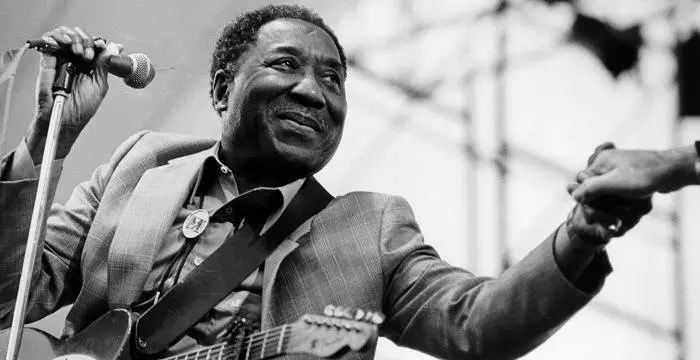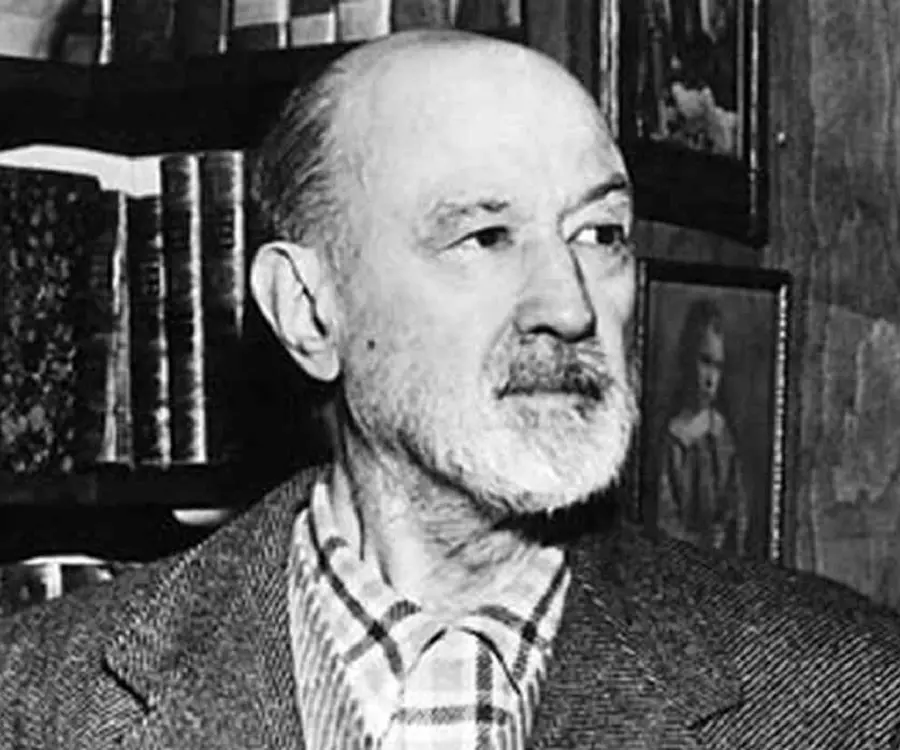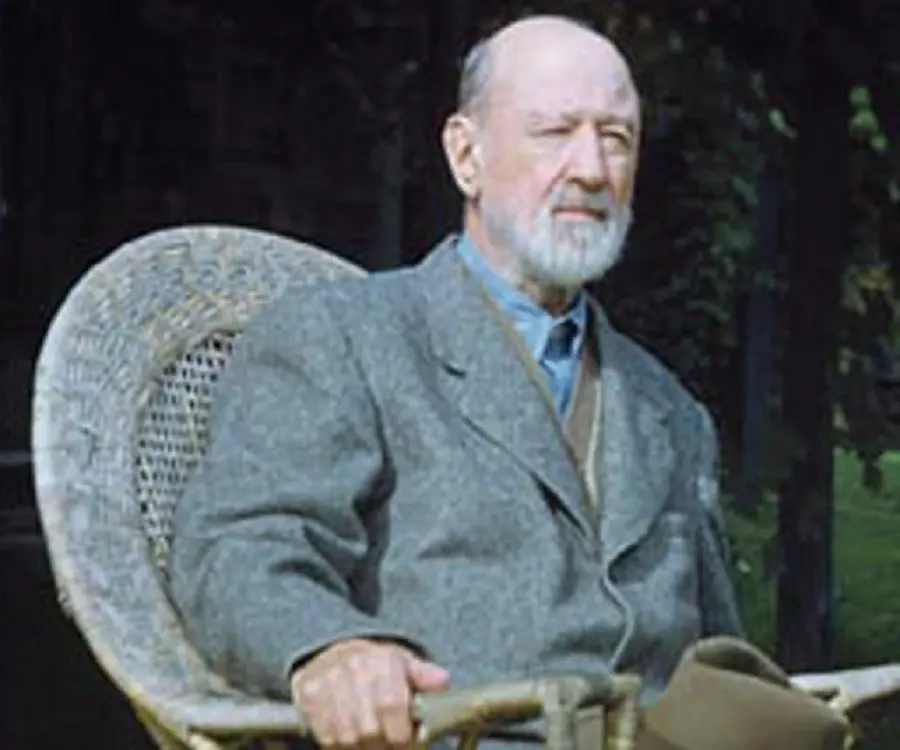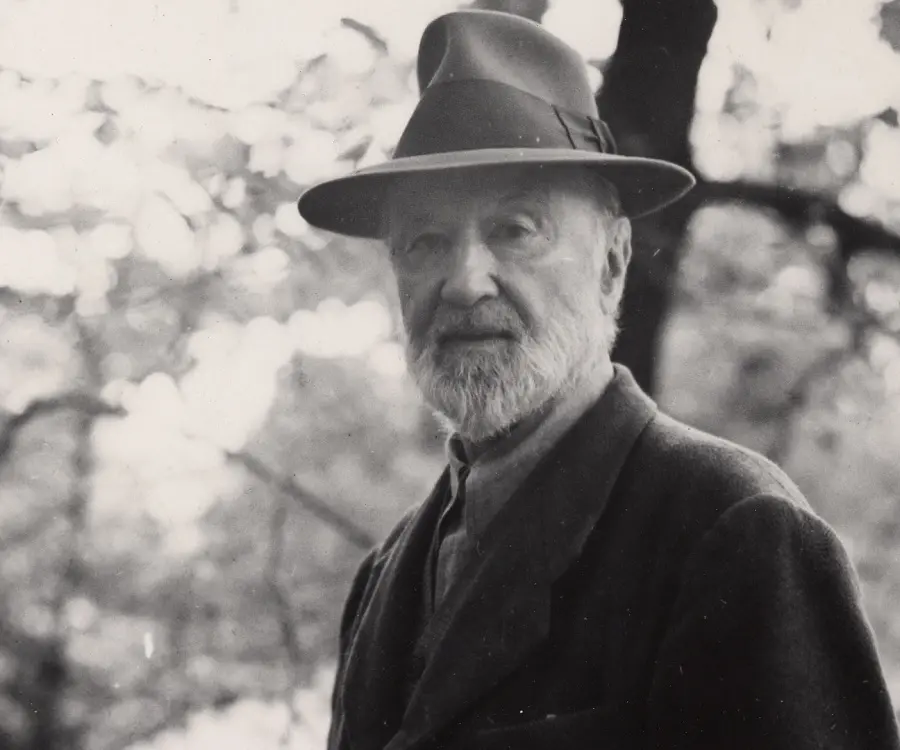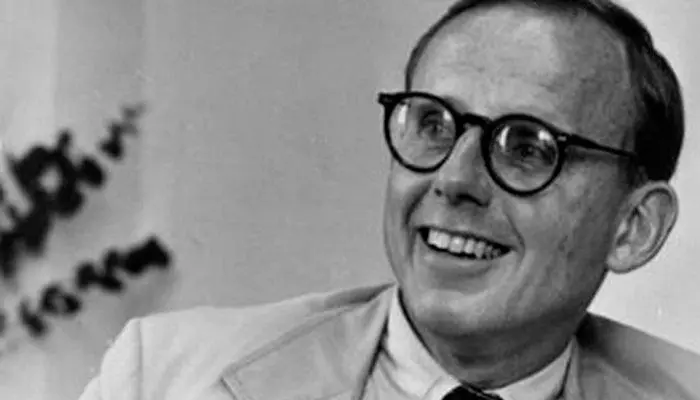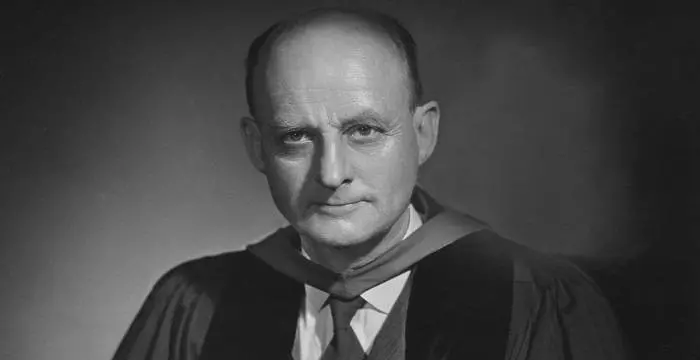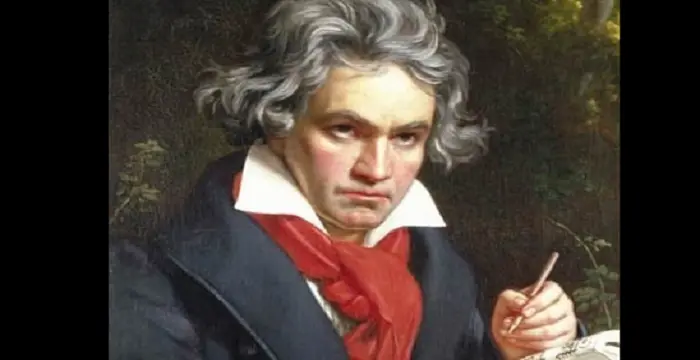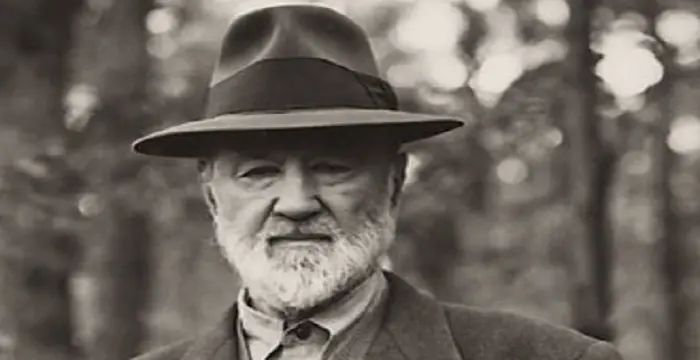
Charles Ives - Yale University, Birthday and Facts
Charles Ives's Personal Details
Charles Ives was an American composer, renowned for his systematic experimentation in music
| Information | Detail |
|---|---|
| Birthday | October 20, 1874 |
| Died on | May 19, 1954 |
| Nationality | American |
| Famous | Yale University, Musicians, Composers |
| City/State | Connecticut, New Yorkers |
| Spouses | Harmony Twitchell |
| Universities |
|
| Notable Alumnis |
|
| Birth Place | New York City, New York, United States |
| Gender | Male |
| Father | George Edward Ives |
| Mother | Mary Parmelee |
| Sun Sign | Libra |
| Born in | New York City, New York, United States |
| Famous as | Composer |
| Died at Age | 79 |
// Famous Musicians
Ted Nugent
Ted Nugent is a hard rock musician known for his hits ‘Stranglehold’ and ‘Cat Scratch Fever’. This biography of Ted Nugent provides detailed information about his childhood, life, achievements, works & timeline.
Muddy Waters
Muddy Waters was a blues musician referred to as the 'father of modern Chicago blues.' Check out this biography to know about his childhood, family life, achievements and fun facts about him.
Travis Bacon
Travis Bacon is an American musician and actor, better known as the son of veteran actors Kevin Bacon and Kyra Sedgwick. Find more about his family, birthday, etc.
Charles Ives's photo
Who is Charles Ives?
Charles Ives was an American composer, renowned for his systematic experimentation in music. He was the first person to combine elements of American popular music as well as church-music traditions with European art music to produce a unique style and experiment with different musical techniques like polytonality, polyrhythm, and tone clusters. The son of a musically inclined father, he inherited his penchant for experimental music from his father, who chose to be a bandmaster in spite of being born in an influential and rich family. Although Charles would have liked to follow his father and become a composer, he was more pragmatic and knew that he could not make a living out of music if he wanted to experiment with it. Therefore on graduating from Yale University, he became a successful insurance man and wrote a number of books on the subject. Concurrently, he continued working with music in private, producing a large oeuvre of work, which was largely ignored during his active years. It was only towards the end of his life that he began to get noticed. Today, he is regarded as an ‘American Original.’
// Famous Yale University
Samuel P. Huntington
Samuel Phillips Huntington was a famous American political scientist who proposed the controversial thesis of ‘The Clash of Civilizations’. Find out more about his life in this biography
Reinhold Niebuhr
Reinhold Niebuhr was a German-American theologian, intellectual and political commentator who wrote the famous book, ‘Moral Man and Immoral Society’. This biography provides information about his profile, childhood, life and timeline.
Jennifer Connelly
Jennifer Connelly is an Academy Award winner American actress who started out as a child artist and reached the epitome of her film career with the movie ‘A Beautiful Mind’.
Childhood & Early Life
Charles Edward Ives was born on October 20, 1874 in Danbury, Connecticut, into a well-to-do business family, who made their initial money by manufacturing and selling hats. Later they branched out into other businesses, earning distinction in life. All of them were highly educated, socially very conscious, and little eccentric.
Charles’ father, George Edward Ives, was an exception. During the Civil War, he became the youngest bandleader in the US Army. Thereafter, he returned to Danbury to become the town’s bandmaster even though the vocation was then looked upon with little respect.
Subsequently, he also became a theater orchestra leader, choir director, and teacher. Trained in classical music, he loved to experiment with tone clusters, polytonality, quartertones, and acoustics. It was clashes of rhythm and tone, which interested him the most and he passed down this trait to his son.
Charles’ mother, Mary Parmelee, was also a unique woman. She used to whistle as she went about doing the household chores. The couple had two sons. While Charles inherited his father’s musical talent, his younger brother, Joseph Moss Ives, became a lawyer.
Charles had his first lesson in music from his father. As the story goes, he was introduced to the art through an interesting incident. One day, when he was five years old, his father came home to find him banging the piano keys with drum parts, using his fists.
George must have sensed some kind of innovative skill in this. Therefore, instead of scolding him, he told him encouragingly, "It's all right to do that, Charles, if you know what you're doing” and then sent him to have his first lessons in drum.
Some time now, he began to receive piano lessons from his father and soon became proficient in it. Later as he was introduced to organ, he became more interested in that. By the age of twelve, he began to play the organ for church services at Danbury Baptist Church.
George had a unique style of teaching. He would often make Charles sit at the town square as he and other bandmasters played the band there. Listening to different bands being played simultaneously, Charles soon developed a unique musical sense, which helped him to experiment in bi-tonal and polytonal harmonization.
Charles started composing hymns and songs for church services from the age of thirteen. At fourteen, he was appointed as a church organist on salary. At seventeen, he composed ‘Variation on America’, an arrangement of traditional “My Country, 'Tis of Thee” for Fourth of July celebration in the following year.
Such intense involvement with music also had its cons. He soon began to feel isolated from his friends and to counter that, he threw himself into sports. He was a great baseball player and found composing a difficult piece like ‘Variation on America’ “as much fun as playing baseball”.
In 1893, the family moved to New Haven, Connecticut. Here, he was enrolled at Hopkins Grammar School, a college preparatory day institution. Here too he continued playing baseball along with studying music and captained the school’s baseball team.
In September 1894, Charles Ives entered the Yale University. Here he studied organ with Dudley Buck and composition with Horatio Parker, learning the basics of composition such as form, orchestration, counterpoint, and harmony from him.
Initially he wrote church music in a choral style similar to Parker. But when his father passed away on November 4 he restarted experimenting with harmony and counterpoint, something which Parker did not appreciate. Although disgruntled, he therefore toned down his music and followed the traditional rules for his teacher.
Sometime in his freshman year, he became the organist of Center Church in New Haven. Concurrently, he took equal interest in games and played on the varsity American football team. Later, he also became a member of HeBoule, Delta Kappa Epsilon (Phi chapter), Wolf's Head Society and Ivy Committee.
In 1898, Ives wrote his Symphony No. 1 in D minor as his senior thesis under Parker's supervision. In the same year, he graduated from Yale and moved to New York. ‘March No. 6’ and ‘The Bells of Yale’ are some of his popular works of this period.
Career
On graduating from Yale, Charles Ives first thought of pursuing a career in composition. But remembering Parker’s reaction to his innovations, he realized that he could not make a living by writing the kind of music he wanted to. Moreover, there were fewer opening for composers than for performers.
He then joined the Mutual Life Insurance Company as a clerk, earning $5 a week. Simultaneously, he took up employment as a part-time organist and choir director at the First Presbyterian Church in Bloomfield New Jersey, moving to Central Presbyterian Church in New York in the following year.
In 1899, Ives left MLI Company to join Charles H. Raymond & Co., where he remained employed until 1906. In private, he continued to work on music, writing new scores as well as improving on his existing works such as ‘String Quartet No. 1’ (1897 – 1902) and ‘Symphony No 1 (1898 -1901).
Among his fresh works, ‘Symphony No 2’ (1899 -1902), ‘Central Park in Dark’ (1906) and ‘The Unanswered Question’ (1906) are most significant. Like many of Ives’ works, the last two pieces remained unknown until they were performed much later in 1946.
When Charles H. Raymond & Co closed down in 1906, Charles teamed up with his friend Julian Myrick to form their own insurance agency. In 1907, they established Ives & Co, which was later renamed as Ives & Myrick. Within a short period it became very successful.
As an insurance executive and actuary, Ives showed his acumen by structuring life-insurance packages for his well-to-do clients. From this evolved the modern practice of estate planning. Their agency was also the first to open a school for insurance agents and for that purpose he wrote a number of books and pamphlets.
‘The Amount to Carry and How to Carry It’, published in 1912 is possibly the first of the lot. It has been revised and reprinted several times. His ‘Life Insurance with Relation to Inheritance Tax’, published in 1918, was another milestone in his insurance career.
From the point of view of music too, the period between 1910 and 1918 had been very productive. ‘The Piano Sonata No. 2, Concord, Mass., 1840–60’, ‘Holiday Symphony’, ‘Three Places in New England’ , ‘Robert Browning Overture’, ‘Symphony No 4’ etc are some of the more popular works of this period.
Illness & Later Years
Working in the office during the day and writing music at night or over the weekend affected his health. In 1918, he became seriously ill and sustained cardiac damage. Slowly he began to reduce his business activities.
He also began composing less and less, but kept on revising his existing works. In 1919, he started working on ‘Orchestra Set No 3’, but in 1926 left it incomplete. According to his wife, one day in 1927, he came down with tears in his eyes, saying that he could not compose anymore.
Indeed, he tried to work on ‘Universal Symphony’, but abandoned it in 1928 because he could not complete it. In 1930, he retired from his insurance business so that he could devote more time to his music; but it did not help.
Although he could not create anything new, the 1930s was important from another aspect. It was during this decade that Nicolas Slonimsky first performed Ives’ ‘Three Places in New England’, both in USA and Europe. It kindled an interest in his work, which were so far largely neglected.
His reputation was further established when in 1939, pianist John Kirkpatrick premiered his ‘Concord Sonata’ at the New York Town Hall. It led to favorable commentary in the major New York newspapers.
Ives gained the final recognition when in 1946 Lou Silver Harrison conducted the premiere of the ‘Symphony No. 3, The Camp Meeting’. It earned Charles Ives the Pulitzer Prize for Music and the accompanying felicitation.
Major Works
Charles Ives is best remembered for his ‘Piano Sonata No. 2, Concord, Mass., 1840–60’, commonly known as ‘Concord Sonata’. Although he started the work in 1904 he did not concentrate on it until 1911, finally completing the piece in 1915. He later revised the work and published it first in 1919 and then in 1947.
Awards & Achievements
In 1947, Charles Ives received the Pulitzer Prize for Music for his ‘Symphony No. 3, The Camp Meeting’, written between 1908 and 1910.
In 1966, twelve years after his death, Ives received the Grammy Award for Best Contemporary Classical Composition for his ‘Symphony No. 4, S. 4 (K. 1A4)’, written between 1910 and 1924. It is notable for its multilayered complexity.
Personal Life & Legacy
On June 9, 1908, Charles Ives married Harmony Twichell. She was the sister of one of his friends and was a trained nurse. The couple had an adopted daughter named Edith (Osborne).
Ives died on May 19, 1954 from a stroke in New York City. He was then seventy-nine years old and was survived by his wife and daughter.
Charles Ives was independently rich, and on her death, Harmony Ives bequeathed the royalties from his music to the American Academy of Arts and Letters for the Charles Ives Prize. Initially it consisted of six scholarships of $7,500, and two fellowships of $15,000, awarded annually to young composers.
Later the American Academy of Arts and Letters established the Charles Ives Living of $200,000 and Charles Ives Opera Prize of $50,000 in his memory.
The house that he was born in Danbury was listed on the National Register of Historic Places in 1976. Today Ives’ Birthplace is owned by the Danbury Museum and Historical Society.
Trivia
When in 1947, Ives received Pulitzer Prize for Music, he gave away the prize money, saying "prizes are for boys, and I'm all grown up". Conductor Lou Harrison received half of it. It is not known who received the other half.
Ives had also financed many other struggling composers in secret. For example, Nicolas Slonimsky later said that Ives had supported him throughout his career.
Although music was his first love, he was equally good at sports. According to one of his coaches in Yule, it was a ‘crying shame’ that he spent so much time on music; otherwise he would have become a champion sprinter.
// Famous Composers
Ludwig van Beethoven
Ludwig Van Beethoven was one of the greatest composers the world has ever had. Check out this biography to know about his childhood, family life, and achievements.
Emina Jahović
Emina Jahović Sandal is a Serbian model, actress and singer-songwriter. Know more about her childhood, life, career, achievements and timeline in this biography.
John Denver
John Denver, a famous American singer-songwriter and activist, is remembered for songs like Take Me Home, Country Roads and Annie's Song. To know more about his childhood, career, profile and timeline read on
Charles Ives's awards
| Year | Name | Award |
|---|---|---|
Other | ||
| 0 | Pulitzer Prize for Music | |
| 0 | Grammy Award for Best Classical Contemporary Composition | |
Charles Ives biography timelines
- // 20th Oct 1874Charles Edward Ives was born on October 20, 1874 in Danbury, Connecticut, into a well-to-do business family, who made their initial money by manufacturing and selling hats. Later they branched out into other businesses, earning distinction in life. All of them were highly educated, socially very conscious, and little eccentric.
- // 1893In 1893, the family moved to New Haven, Connecticut. Here, he was enrolled at Hopkins Grammar School, a college preparatory day institution. Here too he continued playing baseball along with studying music and captained the school’s baseball team.
- // Sep 1894In September 1894, Charles Ives entered the Yale University. Here he studied organ with Dudley Buck and composition with Horatio Parker, learning the basics of composition such as form, orchestration, counterpoint, and harmony from him.
- // 1898In 1898, Ives wrote his Symphony No. 1 in D minor as his senior thesis under Parker's supervision. In the same year, he graduated from Yale and moved to New York. ‘March No. 6’ and ‘The Bells of Yale’ are some of his popular works of this period.
- // 1906 To 1907When Charles H. Raymond & Co closed down in 1906, Charles teamed up with his friend Julian Myrick to form their own insurance agency. In 1907, they established Ives & Co, which was later renamed as Ives & Myrick. Within a short period it became very successful.
- // 9th Jun 1908On June 9, 1908, Charles Ives married Harmony Twichell. She was the sister of one of his friends and was a trained nurse. The couple had an adopted daughter named Edith (Osborne).
- // 1912 To 1918‘The Amount to Carry and How to Carry It’, published in 1912 is possibly the first of the lot. It has been revised and reprinted several times. His ‘Life Insurance with Relation to Inheritance Tax’, published in 1918, was another milestone in his insurance career.
- // 1918Working in the office during the day and writing music at night or over the weekend affected his health. In 1918, he became seriously ill and sustained cardiac damage. Slowly he began to reduce his business activities.
- // 1928 To 1930Indeed, he tried to work on ‘Universal Symphony’, but abandoned it in 1928 because he could not complete it. In 1930, he retired from his insurance business so that he could devote more time to his music; but it did not help.
- // 1930Although he could not create anything new, the 1930s was important from another aspect. It was during this decade that Nicolas Slonimsky first performed Ives’ ‘Three Places in New England’, both in USA and Europe. It kindled an interest in his work, which were so far largely neglected.
- // 1939His reputation was further established when in 1939, pianist John Kirkpatrick premiered his ‘Concord Sonata’ at the New York Town Hall. It led to favorable commentary in the major New York newspapers.
- // 1946Ives gained the final recognition when in 1946 Lou Silver Harrison conducted the premiere of the ‘Symphony No. 3, The Camp Meeting’. It earned Charles Ives the Pulitzer Prize for Music and the accompanying felicitation.
- // 1947When in 1947, Ives received Pulitzer Prize for Music, he gave away the prize money, saying "prizes are for boys, and I'm all grown up". Conductor Lou Harrison received half of it. It is not known who received the other half.
- // 19th May 1954Ives died on May 19, 1954 from a stroke in New York City. He was then seventy-nine years old and was survived by his wife and daughter.
- // 1976The house that he was born in Danbury was listed on the National Register of Historic Places in 1976. Today Ives’ Birthplace is owned by the Danbury Museum and Historical Society.
// Famous Libra Celebrities peoples
Melissa Brim
Melissa Brim is the ex-girlfriend of former professional boxer Floyd Mayweather Jr. Check out this biography to know about her birthday, childhood, family life, achievements and fun facts about her.
Jacob Tremblay
Jacob Tremblay is a Canadian child actor. Let’s have a look at his family & personal life including age, birthday, relationships, net worth and fun facts.
Sierra Furtado
Check out all that you wanted to know about Sierra Furtado, the famous YouTube Personality; her birthday, her family and personal life, her boyfriend, fun trivia facts and more.
Sexxy Lexxy
Alexis Smith Walker, popularly known as Sexxy Lexxy, is an African-American singer. Check out this biography to know about her birthday, childhood, family life, achievements, and fun facts about her.
Benjamin Keough
Benjamin Keough is an American socialite who is best known as the grandson and look-alike of legendary musician Elvis Presley.
Lizzie LDShadowLady
Check out all that you wanted to know about Lizzie LDShadowLady, the famous YouTuber and gamer; her birthday, her family and personal life, her boyfriend, fun trivia facts and more.
Charles Ives's FAQ
What is Charles Ives birthday?
Charles Ives was born at 1874-10-20
When was Charles Ives died?
Charles Ives was died at 1954-05-19
Where was Charles Ives died?
Charles Ives was died in New York City
Which age was Charles Ives died?
Charles Ives was died at age 79
Where is Charles Ives's birth place?
Charles Ives was born in New York City, New York, United States
What is Charles Ives nationalities?
Charles Ives's nationalities is American
Who is Charles Ives spouses?
Charles Ives's spouses is Harmony Twitchell
What was Charles Ives universities?
Charles Ives studied at Yale University, Charles Ives
What was Charles Ives notable alumnis?
Charles Ives's notable alumnis is Yale University
Who is Charles Ives's father?
Charles Ives's father is George Edward Ives
Who is Charles Ives's mother?
Charles Ives's mother is Mary Parmelee
What is Charles Ives's sun sign?
Charles Ives is Libra
How famous is Charles Ives?
Charles Ives is famouse as Composer

